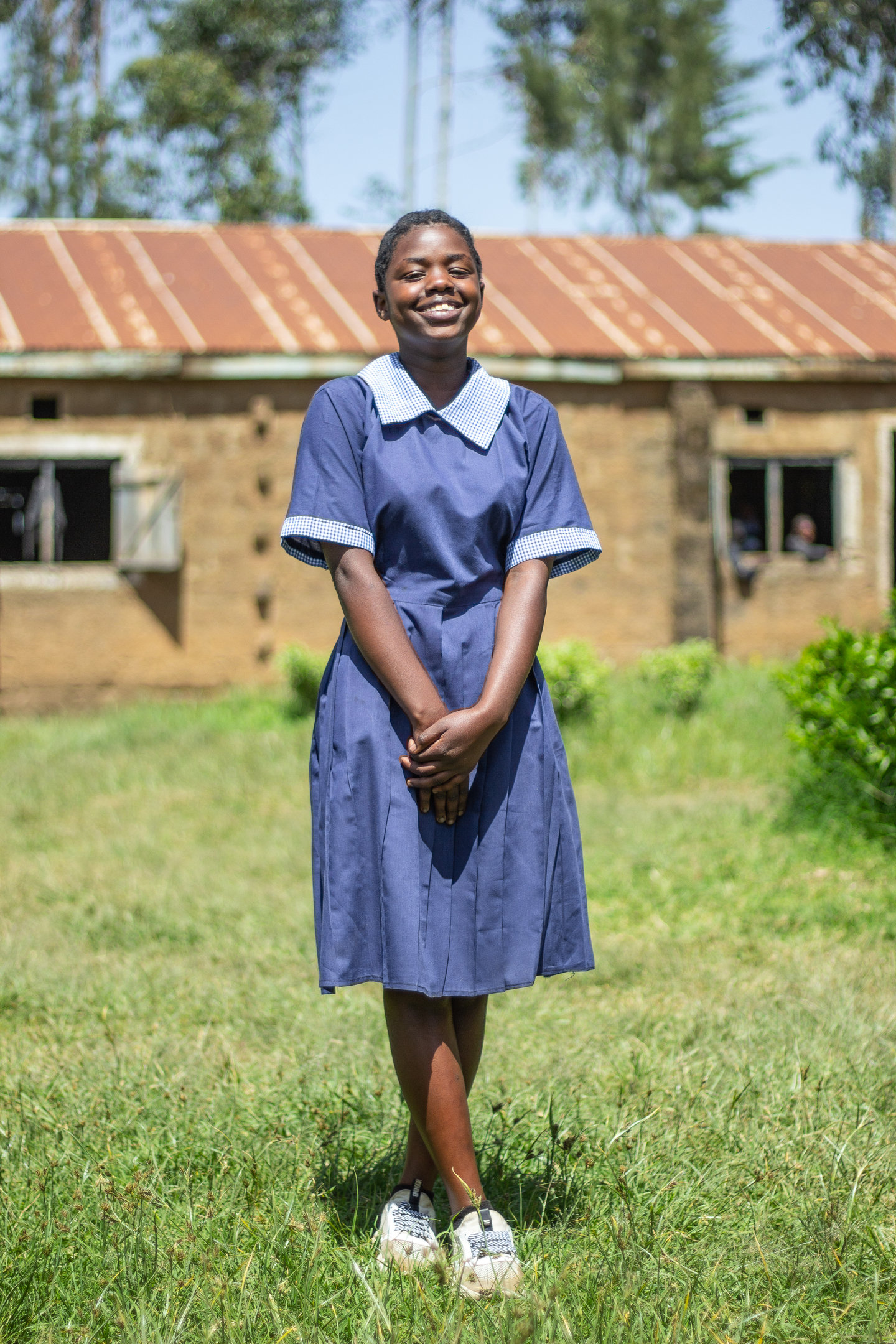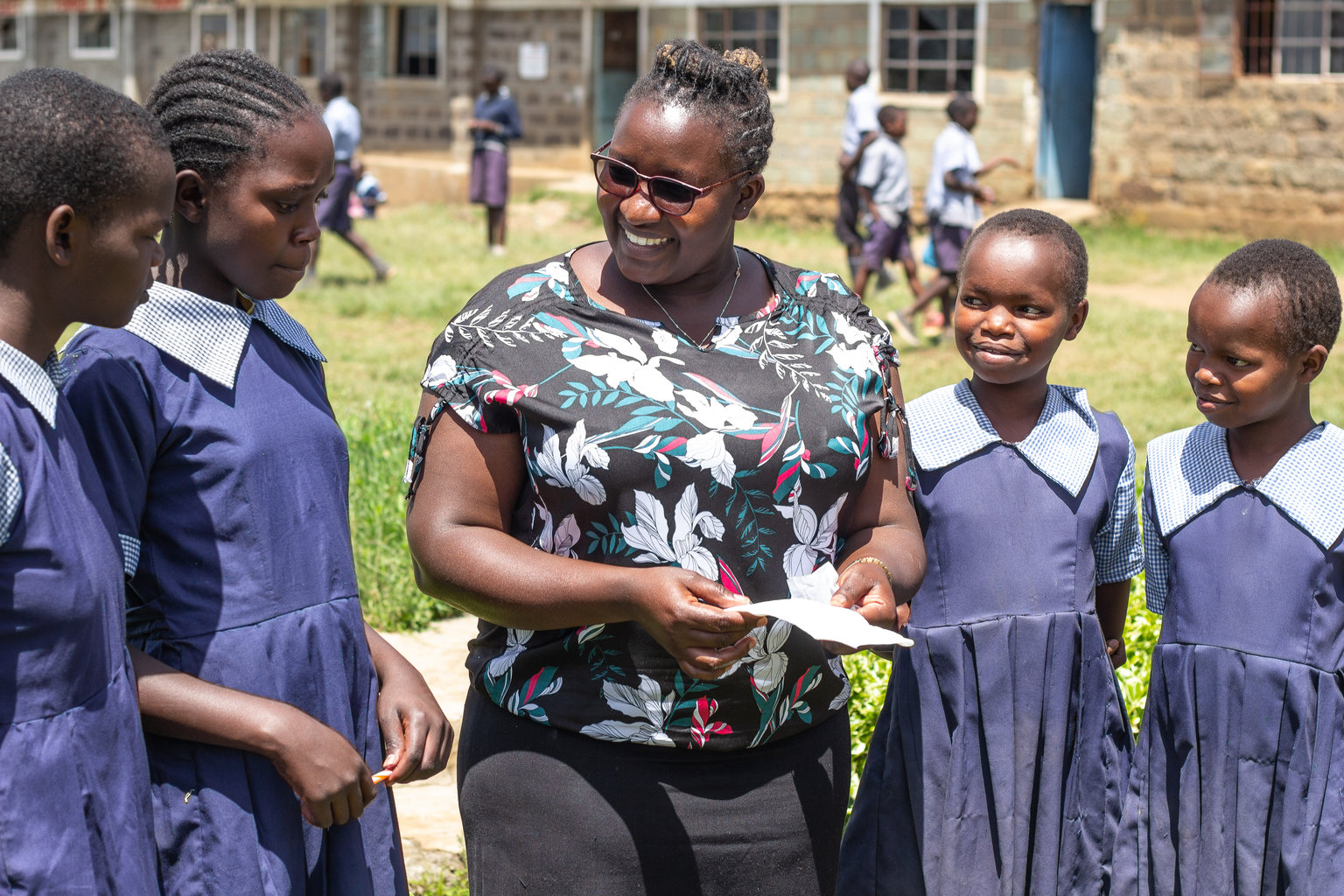Field Stories
In her words: Voices from girls around the world
October 5, 2023
Changing the narrative: A shift in tone for first period stories
Learn how Nutrition International works with county governments in Kenya to empower adolescent girls to take care of their menstrual health through improved nutrition and education counselling.
Posted on September 28, 2022
Primary school teacher Rahab Wanjiru reflects on the first time she got her period. “I can remember the first day I really cried because I was not aware of what was happening to me,” she says. “For all the girls in my neighbourhood, we were caught unaware.”
Wanjiru’s aunt and grandmother reassured her at the time. Now in her thirties, Wanjiru is educating her students so they don’t go through the same experience.

One of her students, eighth grader Maxmillan, illustrates the difference Wanjiru’s work has made. “I was prepared for changes in adolescence, including menstruation,” the fifteen-year-old shares. She says her teachers taught her about menstrual hygiene management and she learned what to expect from the changes in her body. She knew her first menstrual cycle could occur unexpectedly, and she was ready with what she needed when the time came.
This work is part of a coordinated adolescent program that provides comprehensive health and nutrition services in the Nakuru, Busia, Nandi, Makueni and Vihiga counties of Kenya.
In 2016, Nutrition International partnered with the county governments to launch an adolescent health and nutrition program to prevent anaemia through weekly iron and folic acid supplementation (WIFAS) and empower adolescents to be advocates of their own nutrition. The program is designed to integrate topics of nutrition and health within the yearly school curriculum, including menstrual health management. The educational approach seeks to break down taboos surrounding menstruation perpetuated over generations.
Menstrual health is a critical element of Nutrition International’s commitment to improve nutrition and health for adolescent girls. During menstruation, a girl’s body demands increased nutritional support. When these nutritional needs are not met, adolescent girls become at risk of developing underlying health issues, such as anaemia. Adolescent girls who are anaemic can experience low energy and fatigue, making it difficult to focus and perform well in school.
“The adolescent stage is a phase in life where girls are experiencing accelerated growth.
— Christine Nyaga, Senior Project Officer for Adolescent Health and Nutrition
“The adolescent stage is a phase in life where girls are experiencing accelerated growth,” says Christine Nyaga, Nutrition International’s Senior Project Officer for Adolescent Health and Nutrition in Kenya. Nyaga explains it’s important to recognize the relationship between menstruation and nutrition. “Adolescent girls have greater nutritional needs for micronutrients and macronutrients at this point in their life. They have higher nutritional needs for iron and folic acid due to blood loss during menstruation.”
The social stigma can also have severe consequences. According to a 2019-2020 adolescent health survey in Kenya, one in every five adolescent girls stay away from school when they have their period. Additionally, one in every three girls are uncomfortable with their body’s changes, and one in every five girls feels ashamed of their bodies during menstruation. Understanding how menstruation is stigmatized by communities helps Nutrition International identify entry points to improve adolescent health overall.
The Ministry of Education has provided menstrual hygiene products for girls in public schools since 2011 through its own initiatives. This is critical as some students have shared their families would not be able to afford menstrual hygiene products otherwise. The distribution of these products accompanies the improved access to information about health and nutrition that girls receive from their teachers. In turn, this prepares adolescent girls to adequately manage their menstruation and their bodies’ changing needs.

Female and male teachers are provided job aids, such as posters and fact sheets, to reference and put up in classrooms. On top of in-class modules, the program encourages schools to tap into peer-to-peer support groups and trains teachers to act as counsellors when students have questions or concerns about menstruation outside of the lessons.
“Before the program, we used to rely [only] on books in the curriculum,” Wanjiru says. “Now, we have so many young teachers that conduct sessions to guide the girls on how to embrace menstruation and about the foods they should eat. We teach them that they should embrace the physical changes that happen to them. If a student needs to go home to address any issues or symptoms of her menstruation, the school has allowed the flexibility to do that.”
A vital component to breaking taboo is also educating adolescent boys about menstrual health management. Nyaga adds that encouraging boys to attend the peer-to-peer support groups is equally as important as engaging the girls.
“I have seen a lot of change. The students take the information they are given, and they deliver it to their parents so that we can all help support adolescent girls.
— Rahab Wanjiru, Teacher
The impact of this project isn’t only to teach menstrual health management and nutritional choices. At its core, it aims to increase an adolescent’s self esteem so they can feel empowered to take care of themselves and use that confidence to know that they have the freedom to make their own decisions to improve their health.
This is something that Maxmillan relates to as a participant in the program. She says she feels at ease discussing menstruation with her peers and teachers. She’s learned about the importance of eating foods rich in iron, dietary diversity, lessons about menstrual hygiene management, personal hygiene management, physical activity and general wellbeing. “I have improved knowledge and self esteem,” she shares.
“I didn’t have this exposure like girls do now,” Wanjiru says. As a teacher, she is not only seeing first-hand the generational transformation taking place but is an active role model within it. “I have seen a lot of change. The students take the information they are given, and they deliver it to their parents so that we can all help support adolescent girls.”